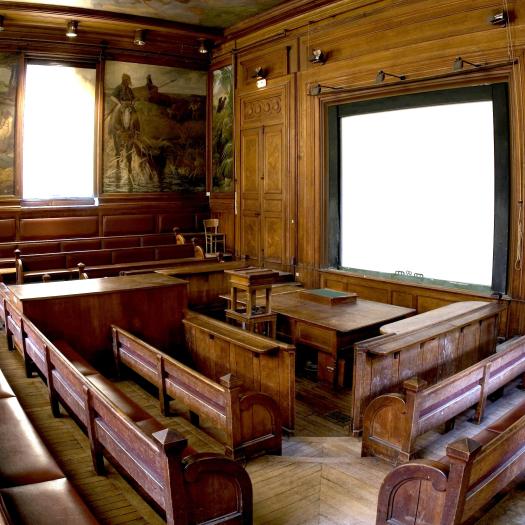PhD Defense - Soheil Hemmati


La soutenance aura lieu le mercredi 10 janvier en présentiel à la Faculté des Sciences de l’Université Ferdowsi de Mashhad, Iran à 14h00 et en visioconférence à 11h30 (heure de Paris)
Composition du jury :
Abstract
The Permian era in Iran has continuously interest of the geologists, drawing them into various stratigraphic projects and these attentions have mostly revolved around the Permian-Triassic boundary (PTB) interval. While these efforts have yielded valuable insights, a significant gap in our knowledge remains unexplored: the Guadalupian-Lopingian Boundary (GLB) and its status in the Iranian geological context. The precise location of the Guadalupian-Lopingian Boundary (GLB) has long been a subject of contention among researchers. In rare reports and publications, diverse interpretations have arisen, influenced by lithological criteria rather than biostratigraphic divisions. Both northwestern Iran and central Iran have affected with this issue, each proposing distinct formations. Even in the Tabas region of Central Iran, the GLB has been identified based on infrequent findings of fusulinids, without the presence of zonal marker conodonts. This PhD thesis define to seeking and precisely determine the GLB’s location in Iran, considering the different section provided by various regions in Iran.
Between the many sections investigated, three specific regions Julfa (Ali-Bashi section), Tabas (Bagh-e-Vang section), and Abadeh (Baghuk section) have been chosen for focused study in this project. The Ali-Bashi section where sampling and an extensive collection of over 240 rock samples from a measured thickness of 189 meters in the Kachik Formation Khachik Formation (Khachik Beds sensu Stepanov et al. 1969). In the Bagh-e-Vang section a meticulous effort resulted in the collection of more than 160 rock samples from an outcrop measuring 260 meters in thickness in the Jamal Formation. Sampling the Baghuk section, encountered specific obstacles that impeded our progress including: covid-19 pandemic and climatic conditions.
High-detailed lithostratigraphical investigation of the Khachik Formation in the Ali-Bashi section, led to identified 14 distinct rock units within the three main members. This discovery has the potential to stimulate the creation of a new lithostratigraphic inventory for these sequences, which can be aligned with the existing background research on the Khachik Formation in this particular section. Furthermore, in the Bagh-e-Vang section, 10 rock units from Jamal Formation strata’s belonging to the three members have also been identified. Various extraction methods, including cold diluted cold CH₂O₂, cold and hot (hot acetolysis)
CH₃COOH, and HF protocols, were tested for the isolation of microfossils such as conodonts, ostracods, and radiolarians from samples collected at the Ali-Bashi and Bagh-e-Vang sections. After extensive preparation efforts and high-observance to a carefully follow up the protocol for extraction conodont element. A thorough analysis was carried out on over 240 samples obtained from the Khachik Formation at the Ali-Bashi section, was failed and despite applying both the cold diluted CH₂O₂ and CH₃COOH techniques, the anticipated results were unexpected and conodont species were not extracted. In the Bagh-e-Vang section also, the approach of employing the diluted CH₃COOH technique was espoused to investigate conodonts. Protocol test outcomes revealed a compelling confirmation of the absence of conodonts in the second section.
Different extraction methods were applied and tested for ostracod extraction from Ali-Bashi section samples. Hot and cold CH₃COOH; cold CH₂O₂ acid that led to me to 67 specimens were extracted from over 240 samples of Khachik Formation. Applying the CH₂O₂ method yielded outcomes that enabled me to identify the respective species. These species are: Bairdia deducta deducta (Zalanyi, 1974); Bairdia hungarica Zalanyi, 1974; Bairdia sp.; Fabalicypris parva Wang, 1978, Fabalicypris sp. 1; Fabalicypris sp. 2; Fabalicypris sp. 3; Fabalicypris sp. 4; Hollinella (Hollinella) herrickana (Girty 1909), Hollinella sp., Sargentina transita (Kozur 1985) and Silenites sp. Bairdia sp., Fabalicypris sp. 1; Fabalicypris sp. 2; Fabalicypris sp. 3; Fabalicypris sp. 4; Hollinella (Hollinella) herrickana (Girty 1909), Sargentina transita (Kozur 1985) and Silenites sp. Bairdia sp., were obtained exclusively through the diluted CH₂O₂ protocol from the hard dolomitized limestones, while the other cold CH₃COOH procedures were unsuccessful.
The applied of the hot acetolysis preparation method allows to me to identified the these species as follows: Acratia changxingensis (Shi, 1987); Acratia sp.; Bairdia deducta deducta (Zalanyi, 1974); Bairdia elcapitanensis Forel 2021; Bairdia cf. fangnianqiaoi Crasquin, 2010; Bairdia grotei Chitnarin, 2017 Bairdia hungarica Zalanyi, 1974; Bairdia khaokanaensis Chitnarin, 2017; Bairdia radlerae Kellett, 1934; Bairdia rhomboidalis Hamilton, 1942; Bairdia cf. songthami Chitnarin et al. 2017; Bairdia sp.30 sensu Chitnarin, 2009; Bairdia sp. 1; Bairdia sp. 2; Bairdia sp. 3; Bairdia sp. 4; Bairdia sp. 5; Bairdia sp. 6; Bairdia sp. 7; Bairdia sp. 8; Bairdia sp. 9; Bairdia ? sp.; Bairdiacypris longirobusta Chen, 1958; Bairdiacypris sp. 6 sensu Zazzali et al., 2015; Bairdiacypris sp. B sensu Tarnac et al., 2021; Bairdiacypris sp. 1; Bairdiacypris sp. 2;
Bairdiacypris sp. 3; Bairdiacypris sp. 4; Bairdiacypris sp. 5; Bairdiacypris sp. 6; Bairdiacypris sp. 7; Bairdiacypris sp. 8; Bairdiacypris sp. 9; Bairdiacypris sp.; Ceratobairdia sexagintaduella Forel, 2021; Ceratobairdia? cf. crenata Chen, 1982; Fabalicypris acetalata (Coryell & Billings, 1932); Fabalicypris glennensis (Harlton, 1927); Fabalicypris parva Wang, 1978; Fabalicypris reniformis (Chen, 1958) sensu Wang, 1978; Fabalicypris sp. 5; Fabalicypris sp. 6; Fabalicypris sp. 7; Hollinella (Hollinella) martensiformis Crasquin et al., 2010 ; Hollinella sp. ; Indivisia sp. 1 sensu Forel et al. 2015; Kempfina qinglaii (Crasquin, 2008); Kempfina sp. 1 ; Liuzhinia julfensis Gliwa, 2021; Praezabythocypris pulchra Kozur, 1985; Praezabythocypris sp. 1; Pseudacanthoscapha striatula (Shi, 1982); Reviya sp.; Sargentina minuta Wang, 1978; Sargentina sp.; and Sulcella sulcata Coryell & Sample, 1932. Meanwhile, some of the identified species of the Bairdia, Bairdiacypris and Fabalicypris genus genera present promising opportunities for defining new species through further studies. Furthermore, the successful identification of a large volume of ostracod’s species from Middle and Upper Permian sequences highlights the significant potential for exploring this fossil-group in Iran. In spite of strict compliance of the recommended protocol, to employ the HF technique in the processing of 12 cherty samples obtained from the Ali-Bashi and 8 cherty samples obtained from Bagh-e-Vang sections yielded a disheartening outcome and none of the radiolarian specimens were discernible in the sediment of either sample set.
Microfacies analysis in the Ali-Bashi section led to identified 28 sub-microfacies which, derived with 15 distinct microfacies. The assemblage of microfacies groups, ranging from MKL1 to MKL2 (lagoonal environment), MKR2 to MKR3 exhibit features characteristic of a restricted inner ramp setting. The MKO1 to MKO4, suggests a confined setting, occurring in the final part of the inner ramp under an open marine environment. Microfacies groups MKM1 to MKM3 are inferred to have been deposited after the open marine environment, within the mid-ramp zones, whereas MKT1 to MKT3 were identified in the initial parts of the outer ramp, corresponding to the Toe-of-slope position in the carbonate shelf setting. Additionally, adhering to the standard microfacies designated by Flugel (2010), the study proposes 10 microfacies of the RMF type, along with their corresponding 4 SMFs for the studied strata. Besides, based on the standard facies zones (FZ) introduced by Wilson (1975), three FZs exhibiting a shallowing-upward trend, namely FZ8, FZ7, and FZ3, have been successfully delineated.
Keywords: Extraction process, Ostracods, CH₂O₂, CH₃COOH, hot acetolysis, HF, Guadalupian-Lopingian, Khachik Formation, Jamal Formation, Ali-Bashi section, Bagh-e-Vang section, Baghuk section.



